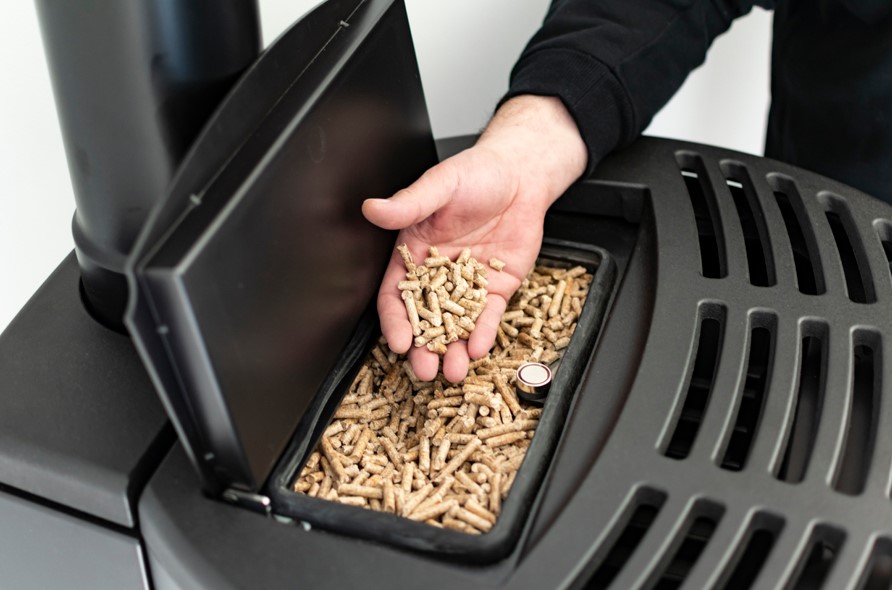The importance of determining the quantity of pellets
If it is important to determine the necessary quantity of pellets that you will need during the winter, it is to be able to live this period peacefully without fear of running out of fuel for your boiler or your stove, or to the opposite, to have too much. Indeed :
- if you order too large a quantity of pellets, well beyond your actual consumption, you will then have to store them until the following year;
- conversely, underestimating will force you to reorder pellets, running the risk of not finding them in the heart of winter or finding them at a higher price.
Either way, these two situations are not ideal! It is therefore better to try to accurately estimate the quantity of pellets needed to get through the winter. The fact remains that it is always difficult to know the exact quantity needed, because many criteria will have an impact on your pellet consumption. Unfortunately, among these criteria, there is one that is increasingly difficult to trust, especially in recent years: the weather.

Criteria with an impact on your pellet consumption
The consumption of pellets will vary depending on different factors that must be taken into account to order the fairest quantity possible.
The surface to be heated
The most determining factor is, without a doubt, the surface area to be heated per square meter. You can therefore use different methods to find out the quantity of pellets to order for your home:
- You can refer to the DPE or the energy audit that was carried out for your house. In these documents, you will find your consumption expressed in kWh per year. You must then multiply this consumption with the number of square meters, then divide the number obtained by 5. The result thus obtained corresponds to the quantity of pellets required expressed in kilograms. Let’s take the example of a 200 m² house whose energy needs amount to 100 kWh/m² and apply the calculations explained above:
- Area x Energy needs/m², i.e. 200 x 100 = 20,000 kWh/year.
- Number obtained / 5, or 20,000 / 5 = 4,000 kg of pellets, or 4 tons of pellets.
- If you previously heated your home with an oil or gas boiler, you can base yourself on your previous consumption. Thus, it is estimated that 2 kg of pellets are the equivalent of 1 liter of fuel oil and 1 m³ of gas. It is then easy to obtain the quantity of pellets you need to order. For example, if you used to order 2,000 liters of fuel oil and that was enough for you, all you have to do is convert this quantity of fuel oil into kilograms of pellets by performing the following calculation: 2,000 x 2 = 4,000 kg of pellets, or 4 tonnes.
- Generally speaking, it is estimated that the average quantity of pellets needed for a house of 80 m² is 2 tonnes per winter and that it is between 4 and 5 tonnes for a house of 150 m². However, these estimates take into account neither the user’s habits nor the home.
The characteristics of the boiler or stove
Another point to take into consideration to most accurately determine your pellet consumption is the device itself.
- Concerning pellet boilers: You should know that older ones are less efficient and tend to consume more pellets. Likewise, the model of the boiler will have an impact, because not all types of pellet boilers are equal in terms of consumption per hour, which will inevitably have an impact on your total consumption. Everything will, to a significant extent, depend on the power of your device, its management mode, etc.
- Regarding pellet stoves : the same observations as for pellet boilers apply, but for the latter, the choice of their location is also decisive. When installing a pellet stove, it is also recommended to favor a central location to allow better heat diffusion.
The thermal performance of your home
If your home has good insulation, the quantity of pellets you will need to get through the winter will be less than that needed by a person living in a home of the same size, but poorly insulated.
Nothing exceptional in this insofar as effective insulation eliminates the “thermal sieve” effect and maintain a suitable room temperature without having to put too much strain on the boiler. So, if you wish reduce your energy bills, it may be useful to check the insulation, but also the doors and windows of your home.
User habits
The daily habits of users can greatly impact the annual consumption of pellets. Nothing could be more logical: if you need to have an ambient temperature of 21°, you will consume much more pellets than a person who respects the official recommendation of 19°C and which strives to heat the bedrooms and bathroom less when they are not in use.
In fact, by adopting good habits, you can considerably reduce your pellet consumption.
Current boilers benefit from a large number of programs and allow numerous adjustments to be made. You can, for example, reduce the heating to 17 or 18° when, during the day, no one is in the house and program a temperature of 19° for your return.
Likewise during the night, it is possible to lower the temperature by a few degrees and raise it again before you wake up. Depending on your daily lifestyle, a large number of tips can be applied to reduce your pellet consumption.
Ask the installer for advice
If you have recently had your pellet boiler installed, do not hesitate to seek advice from the professional who took care of the installation. He will be able to tell you the approximate quantity you will need.

